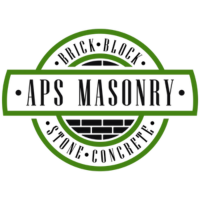Do You Need A Permit to Remodel A Bathroom?
Considering a bathroom remodel? Don't overlook the importance of permits. They're not just red tape; they're your assurance of safety, legality, and...
9 min read
 Alec Serowatka
:
Jan 30, 2024 3:18:38 PM
Alec Serowatka
:
Jan 30, 2024 3:18:38 PM

Gutting a house is no small feat; it means stripping your house down to its essential structure and redesigning it from the inside out.
However, the average cost of gutting and remodeling a house can be as much as 60% cheaper than buying a new home. This staggering statistic highlights the potential savings homeowners can achieve by renovating rather than relocating.
This article provides a deep look at the costs, important steps, and practical tips to guide you through the transformative journey of a gut renovation. From initial planning to the final touches, learn how to manage a project that can significantly increase your home’s functionality and value.
A gut renovation is more than a simple facelift for your home. This process involves diving into the structure of your house, eliminating all but the core structural elements like the wall studs and load-bearing walls. As you reveal the bones of your home, you rebuild it according to your vision - a procedure that sets it apart from a typical remodel.
A remodel tends to focus on specific areas or features. You might update the kitchen cabinets, replace the bathroom tiles, or install new light fixtures. In contrast, a gut renovation is all-inclusive. It’s about taking your home back to square one and starting fresh.
In essence, a gut job signifies a home’s metamorphosis. This process involves:
It’s a complete overhaul, a transformation of your home’s interior, a complete change of your living space from the inside out.
When you gut a house, you’re not just knocking down walls and pulling up floors. You’re also dealing with the nitty-gritty details like:
It’s an extensive process, but the end result is a home that’s truly yours.
While remodeling and gutting involve changes to your home, they operate on different levels. A home remodel is like giving your home a makeover. You might replace cabinet doors, update fixtures, or change the paint color. It’s about improving what’s already there without fundamentally altering the structure of the home.
Gutting, on the other hand, is more similar to a total transformation. You’re removing the entire interior down to the studs, eliminating most interior structures, and often replacing windows, doors, and undertaking extensive work on plumbing and electrical systems. It’s a much more intensive process, but it allows for a complete overhaul of your home’s interior.
Although a gut renovation allows you to build your dream home, it’s well-known that this comes at a hefty cost. The costs can range from:
However, the cost of a gut renovation isn’t just about the square footage. You also need to consider additional expenses like permits, which can range from $30 to $500 for smaller projects and skyrocket to $3,000 or more for larger renovations like gutting. Waste disposal is another cost to bear in mind, typically ranging from $2 to $8 per square foot.
As you dissect the cost per square foot, bear in mind that a gut renovation doesn’t follow a one-size-fits-all model. The cost is influenced by a host of factors, from the scope of work to the age and layout of your house, and even the type of home you’re renovating.
For example, a basic gut might cost between $2 to $8 per square foot, while a high-end remodel could reach up to $150 per square foot. And if you’re in a high-cost area like New York City, you could be looking at an average cost ranging from $250 to $300 per square foot. It’s crucial to consider all these factors when budgeting for your renovation project.
When budgeting for a gut renovation, it’s easy to overlook certain expenses. For instance, permit fees can vary dramatically depending on the specific scope of work. For a bathroom remodel permit, you might pay anywhere from $175 to $2,000.
Another often overlooked cost is waste disposal. Typically, you can expect to spend around $400 on dumpster fees, but the actual cost can range from $2 to $8 per square foot. And don’t forget about the potential costs of removing hazardous materials like asbestos insulation, which can range from $20 to $65 per square foot. All of these factors need to be factored into your budget to avoid unpleasant surprises down the line.
.jpg?width=658&height=370&name=APS%20M%20Template%20(3).jpg)
Having covered the basics of what a gut renovation includes and its potential costs, we can now explore the actual process. A gut renovation involves three main phases: planning and budgeting, demolition, and rebuilding and finishing touches.
The renovation process typically consists of three main phases:
By following these three phases, you can successfully complete your renovation project.
A vital component of the gut renovation process is planning and budgeting. This is where you:
Creating a detailed budget for your renovation is a crucial step in this process. Here are the steps you should follow:
The interior demolition phase introduces the messier part of the process. This is where you’ll be:
While this phase can be daunting, it’s also an exciting part of the renovation process. It’s about clearing out the old to make way for the new. But it’s also vital to take precautions during this phase. Make sure to disconnect utilities at the start of the project to prevent accidents and guarantee safety. Also, remember to dispose of waste materials properly to prevent pollution.
After clearing away the old, the rebuilding phase commences. This is the phase where you’ll be:
It’s a complex process, involving a range of tasks.
And then come the finishing touches. This is where your gut renovation comes to life, with paint, flooring, and decorative elements added to finalize the renovation. It’s the culmination of all your planning and hard work, resulting in a completely transformed space that’s tailored to your needs and preferences.
A key aspect of a gut renovation revolves around compliance with local regulations and safety standards. Building codes and zoning ordinances influence your renovation project, and it’s crucial to verify with your local building department to make sure you comply.
Permit requirements are another factor to consider. Depending on the scale of your renovation, you might need permits for major structural changes, electrical and plumbing work, and even for the gut renovation itself. Making sure you have all the necessary permits in place can prevent costly fines and delays down the line.
The success of a gut renovation hinges on a skilled team and having the right tools, making the selection of the right professionals pivotal. This includes:
But choosing the right team isn’t just about their qualifications. It’s also about how they work and whether they’re a good fit for your project. That’s where understanding contractor bids comes in. A total bid should provide a detailed breakdown of costs, a projected timeline for the project, and specific renovation goals or requirements.
When interviewing potential contractors, it’s important to ask the right questions. This includes inquiring about:
You should also ask whether they can provide proof of insurance. A reputable contractor will have both general liability insurance and workers’ compensation insurance.
Don’t forget to ask for references, too. A good general contractor should be able to provide a list of past clients who can vouch for their work. Remember, a gut renovation is a significant undertaking, and choosing the right contractor can make all the difference.
Once you’ve narrowed down your list of potential contractors, the next step is to evaluate their bids. It’s not just about the bottom line; you also need to consider the scope of work, the quality of materials and labor, and the proposed timeline for the project.
Keep in mind that a lower bid doesn’t necessarily mean a better deal. A bid that’s significantly lower than others may indicate that the contractor is cutting corners or hasn’t fully understood the scope of the project. Remember, your gut renovation is a significant investment, so it’s worth taking the time to understand contractor bids thoroughly.
Choosing a place to reside during your gut renovation is a complicated decision. While living on-site saves money on temporary housing and improves communication with contractors, it can also cause inconvenience due to noise, dust, and disruptions to daily routines.
If you choose to live on-site, it’s crucial to establish clear boundaries with your construction team and take measures to protect your furniture and belongings. If you opt for off-site accommodations, consider options like extended-stay hotels, short-term rental apartments, and companies specializing in providing housing during construction.
During a gut renovation, safety and efficiency emerge as two key factors to consider. From wearing the right personal protective equipment, such as safety gear, to making sure utilities are safely disconnected, it’s crucial to create a safe and efficient work environment, especially when dealing with attic insulation.
Utility representatives are important in this process, marking the location of underground utilities to prevent unintended damage and injuries during the excavation or demolition process. And don’t forget the importance of wearing proper personal protective equipment. This not only protects workers from potential hazards, but it also helps to guarantee the project, overseen by a structural engineer, runs smoothly and efficiently.
A gut renovation transcends the idea of a mere construction project. Instead, it signifies a transformation, a metamorphosis of your living space. Whether you’re addressing pest infestations, mold, and asbestos, renewing all interior finishes, or reconstructing walls and flooring, a gut renovation offers the opportunity to create a completely customized space that reflects your personal style and meets your unique needs.
The transformation is not just about beauty, but also about functionality. Upgrading outdated features, integrating modern design elements, and addressing structural issues increases your home’s functionality and overall design. And the best part? A gut renovation can also raise your home’s value, making it not just an investment in your quality of life but also a sound financial decision and a cost-effective choice.
If you're considering a gut renovation and require expert masonry services, don't hesitate to reach out to APS Masonry. As a highly reputable masonry contracting company based in Pennsylvania, they serve a wide area of the state and are ready to bring their craftsmanship and expertise to your project. Contact APS Masonry to guarantee your renovation's foundation is as solid as your vision.
A gut renovation is a significant undertaking, but with careful planning, the right team, and a clear vision, it can transform your home, adding value and improving your living space. Whether you’re just starting to consider a gut renovation or you’re already knee-deep in the planning process, we hope this guide has provided helpful insights and practical advice to aid you on your renovation journey.
Yes, it can be worth gutting a house if you understand the costs involved and the ability to manage them effectively, especially if the local real estate market is growing. However, one drawback is the need to purchase the property before fully understanding the extent of the renovations required.
"Gutting a house" refers to stripping the home down to the wall studs, rather than just making small changes or remodeling one aspect of the home. This is the true definition of gutting a house.
A gut renovation involves a total overhaul of your home, stripping it down to its core structural elements, while a remodel typically focuses on updating specific areas or features. This helps to differentiate the two types of home renovation projects.
Gut renovation costs typically range from $19 to $250 per square foot, with additional expenses for permits and waste disposal. Be sure to budget for these additional costs when planning your renovation project.
When selecting a contractor for your gut renovation, consider their background, experience, past clients and references, insurance coverage, and thoroughly understand their bids. These factors will help you make an informed decision about who to choose for your project.

Considering a bathroom remodel? Don't overlook the importance of permits. They're not just red tape; they're your assurance of safety, legality, and...

Remodeling your historic Philadelphia home in 2025 just got easier (and cheaper).

Copper gutters reflect the architectural care and attention Main Line homes are known for. Maintenance keeps them working and keeps your property...